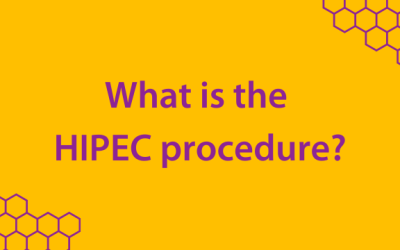Pseudomyxoma peritonei (PMP) is a rare malignant disease characterized by the progressive and multifocal accumulation of abundant mucinous tumour tissue in the peritoneal cavity. It is generally associated with a perforated epithelial neoplasm of the appendix. The Peritoneal Surface Oncology Group International (PSOGI) has recently published a consensus statement about the diagnosis and treatment of mucinous appendiceal tumours and PMP. It recommends, whenever possible, cytoreductive surgery* plus hyperthermic intraperitoneal chemotherapy* (CRS + HIPEC) in reference centres, as the most effective treatment for these patients.
After this treatment, some patients may have a reocurrence. In some cases, this reocurrence could be managed by another surgical procedure in experienced units but sometimes this is not possible. In the cases considered as unresectable, currently palliative systemic chemotherapy becomes the only possible treatment with no satisfactory results.
Bromelin is a drug obtained from pineapple which it has mucolytic properties, making the mucin associated with PMP less thick and sticky. Bromelain has been associated to N-acetyl-cysteine, another mucolytic, in a composed drug called BromAc®. This was developed by Professor David Morris and it has had promising results to reduce the pseudomyxoma peritonei reocurrences in previous studies.
Our Unit of Surgical Oncology from Hospital University Reina Sofia, Cordoba in Spain is going to start a phase I/II trial to assess the clinical effectiveness and safety of the locoregional treatment with Bromelain +N-Acetylcysteine to decrease tumour burden in patients with abdominal reocurrence of mucinous tumours, who are not candidates for repetitive resection surgery. We have got a public grant to do it in a cohort of ten selected patients. This treatment could improve the outcome and the quality of life for our patients.
Study coordinators: Dr. Arjona-Sanchez A. And Dra. Rodriguez-Ortiz L.
Unit of Surgical Oncology and Pancreatic Surgery. Liver and Pancreas Transplantation. Research in Peritoneal Oncologic Surgery Group, Institute of Biomedical Research IMIBIC. University Hospital Reina Sofia, Cordoba, Spain
Complete cytoreduction
Complete cytoreduction is the complete surgical tumour removal. This is a long operation which takes about 10 hours to complete and includes:
- removal of the right hemicolon
- spleen
- gall bladder
- greater omentum and lesser omentum
- stripping of the peritoneum from the pelvis and diaphragms
- tripping of tumour from the surface of the liver
- removal of the uterus and ovaries in women
- removal of the rectum in some cases
This is also referred to as a full peritonectomy. The goal is to remove tumour nodules down to 2.5mm.
HIPEC
Hyperthermic Intraperitoneal Chemotherapy
Heated chemotherapy, delivered directly into the abdomen, after complete cytoreduction. If the surgeons are able to remove the all the tumours, you may be given HIPEC.
Hyperthermic means that the chemotherapy solution used during the procedure is heated to a higher-than-normal temperature, typically around 41-43°C (105.8-109.4°F). This is usually Mitomycin C. This is put directly in your abdomen while you are in theatre. This elevated temperature is maintained throughout the duration of the procedure, usually around 90 minutes, to enhance the effectiveness of the chemotherapy drugs and to target cancer cells in the abdominal cavity. HIPEC will penetrate tumour nodules up to 2.5mm in size. The combination of chemotherapy drugs and hyperthermia can help to destroy cancer cells (increased cytotoxicity) while minimizing damage to healthy tissue.
Chemotherapy given into the abdomen during surgery is called intraoperative chemotherapy.
You might also like to read…
What surgery is called the mother of all surgeries?
Treating pseudomyxoma peritonei and appendix cancers can be challenging.
What is the HIPEC Procedure?
HIPEC (hyperthermic intraperitoneal chemotherapy) is a medical procedure that’s sometimes used to treat advanced cancers that have spread to the lining of the abdomen.
Your sexual health after treatment
Sexual dysfunction was identified in 87% of respondents in a survey of cancer survivors.




Any news research or potential improvements in treatment and options is hugely welcome. The concept sounds incredible and I truly hope the trials are successful
Any trials like this in the UK?
As soon as we have any information about UK trials, we will be sharing.
Ich bin selbst von der Krankheit betroffen.
Gibt es schon erste Ergebnisse?
This really sounds promising. Are there also any trials in the Netherlands or Belgium???
Are there any updates on this trial?
Not as yet, Hannah. We will keep the website updated with progress as soon as we have it.
Any news on that trial?
Not yet Maurus – we will update the website as soon as we hear any more.
I find it really frustrating that there are announcements for new hope with trials posted in forums like this.
Without any first hand testimony and rarely links to papers it’s just poor moderation without offering your readers follow up.
Both of these items are OTC (over the counter) drugs/supplements. If accessibility is easy why has the outlets specialising in PMP not investigated this.
Why has this not been followed up with the readers who are desperately looking for answers -good headline without any substance?
Hi Eli – Prof Morris in Australia devised and implemented Phase 1 of this trial – more information can be found here: https://www.karger.com/Article/FullText/514273. The use of this drug is specifically being trialled on patients with PMP, so the results of the trial will be of interest to all within the PMP community. This article on our website is to inform readers that the trial is entering a second phase in Spain.
I see in your definition of complete cytoreduction, you state “removal of the right hemicolon” and “removal of the rectum in some cases.”
However, the right hemicolon does not not always need to be removed, and for LAMN (low-grade appendiceal mucinous neoplasm) it very often does not need to be removed.
I had a 10-hour complete cytoreduction myself, completely successful, with many many things removed, and did not have a hemicolectomy. I had a partial cecectomy instead, which is a much much smaller amount of colon removed.
I think it would be better phrased in the definition as “removal of the right hemicolon in some cases.”
Thank you for your comment Gina and I’m very pleased to read that you had a complete cytoreduction. THe definition on our website is taken from the NICE guidance. We are individuals, treatment will be specific to each of us.
I recently got diagnosed with pmp. Is there any news?
This is very encouraging particularly for people like me who are told we are not good candidates for surgery in Canada.